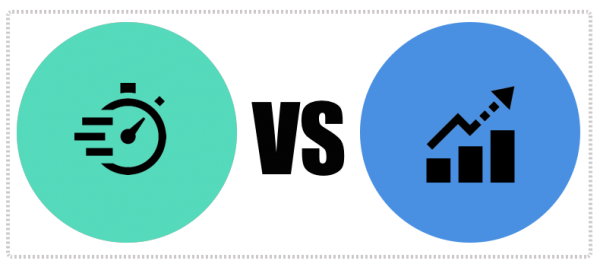
“If you build it, they will come.”
![]() While this motto worked well for baseball enthusiasts in an Iowan farm town, it doesn’t work so well for a results-driven B2B marketing strategy.
While this motto worked well for baseball enthusiasts in an Iowan farm town, it doesn’t work so well for a results-driven B2B marketing strategy.
Building marketing assets is only half the puzzle to generating traffic, leads, and growth. Yet many companies focus only on “builder” activities while neglecting drivers or vice versa.

First, what is a builder activity?
A builder activity can be defined as an action focused on building marketing assets. For example:
While these are all great activities, merely creating assets will not result in marketing growth, lead generation, or closed sales deals.
You must invest time and resources into driver activities to see this kind of traction.
A driver activity can be designed as an action that drives new targeted traffic toward your conversion points. For example:
Driver activities set your builder assets up for success by driving targeted traffic and potential leads to your company’s website and conversion points.
8 Website Design Strategies to Improve Lead Generation [Free eBook]
They also help you achieve statistical significance on your A/B tests since your sample size is ramped up. You can accurately measure your campaign conversion rates and make data-driven optimizations with qualified traffic. This can lower your cost-per-lead and improve overall campaign performance.

Both builder and driver activities are critical to both campaign growth and meeting your goals. Unfortunately, many B2B companies invest heavily in one or the other. As a result, they don’t see much traction on their marketing assets or many conversions on their website.
For example, imagine you run a PPC campaign without first building quality content and branded landing pages. Where will you drive traffic? Even if you invest thousands of dollars into a paid campaign on any network, if you don’t have tailored and impactful marketing assets to convert them, you will waste your dollars.
This is why many companies see low returns on their paid spend. By driving paid traffic to something generic, such as your homepage, you miss out on a valuable conversion opportunity.
Conversely, if you spend all your time building landing pages and content offers — as many marketing agencies and businesses do — but don’t invest resources and budget into driving traffic, your beautiful assets will sit and gather dust. And you will be left wondering why inbound failed your business.
At Ironpaper, we shoot for a balance of about 70/30 between builders and drivers, spending more time building assets in each month’s playbook and slightly less time driving paid traffic to these pages.
We also focus on other important activities, like website development, infrastructure building in HubSpot, and reporting on analytics so we can make data-driven campaign decisions.
Ironpaper recently practiced the builder-driver balance with a major client: a prominent mobile ad network. By striking a balance of both activities, we saw impressive growth for the B2B company.
First, we invested time into repurposing dry, out-of-touch marketing collateral. We built beautiful, targeted content offers such as white papers, infographics, and eBooks. Our team targeted these offers for the right buyer persona. To publish these offers, we created customized landing pages with conversion forms.
Next, we built custom audiences using LinkedIn and ran paid ad campaigns with daily budgets of around $400. We drove this traffic to lead generation forms and our landing pages to capture new qualified leads.
By driving substantial traffic and impressions, we gathered and measured meaningful data with statistical significance. Then, we could make campaign improvements to particular ad designs, forms, copy, and landing pages.
Over time, we were able to lower the cost-per-lead to around $100, an all-time company low in the North American market. We generated nearly 50 marketing-qualified leads from major Fortune 500 companies in a matter of weeks and gained insights on the subject matter that resonated with the target audience. For the next month, using our statistical data, we increased the lead quality even higher while maintaining the number of leads.
With the right mix of builder and driver activities, you can see the faster impact on your marketing assets and scale up your campaigns for never-before-seen campaign growth.
by Jonathan Franchell, CEO of Ironpaper - For more tips and hacks: Need to remove a new line after h1 tags? Both web designers and SEO practitioners need to employ headline tags: H1, H2, H3 in several ways to improve web page structure and tag...

The Crowded Arena of the IT Marketplace Updated December 2024 The Information Technology (IT) landscape is experiencing rapid growth and intensifying competition. IT spending is projected to reach nearly 5.1 trillion U.S. dollars in 2024, a...

Updated December, 2024 The field of digital marketing is evolving rapidly in response to new technology and changing buyer expectations. To help career-minded marketers, we’ve rounded up the top 10 skills needed to succeed in the field. These are...

The marketing industry is transforming significantly due to generative AI and increasing market complexity. Gartner's prediction of a 25% decline in traditional search traffic suggests that the era of search engines is dying. AI tools, particularly...
